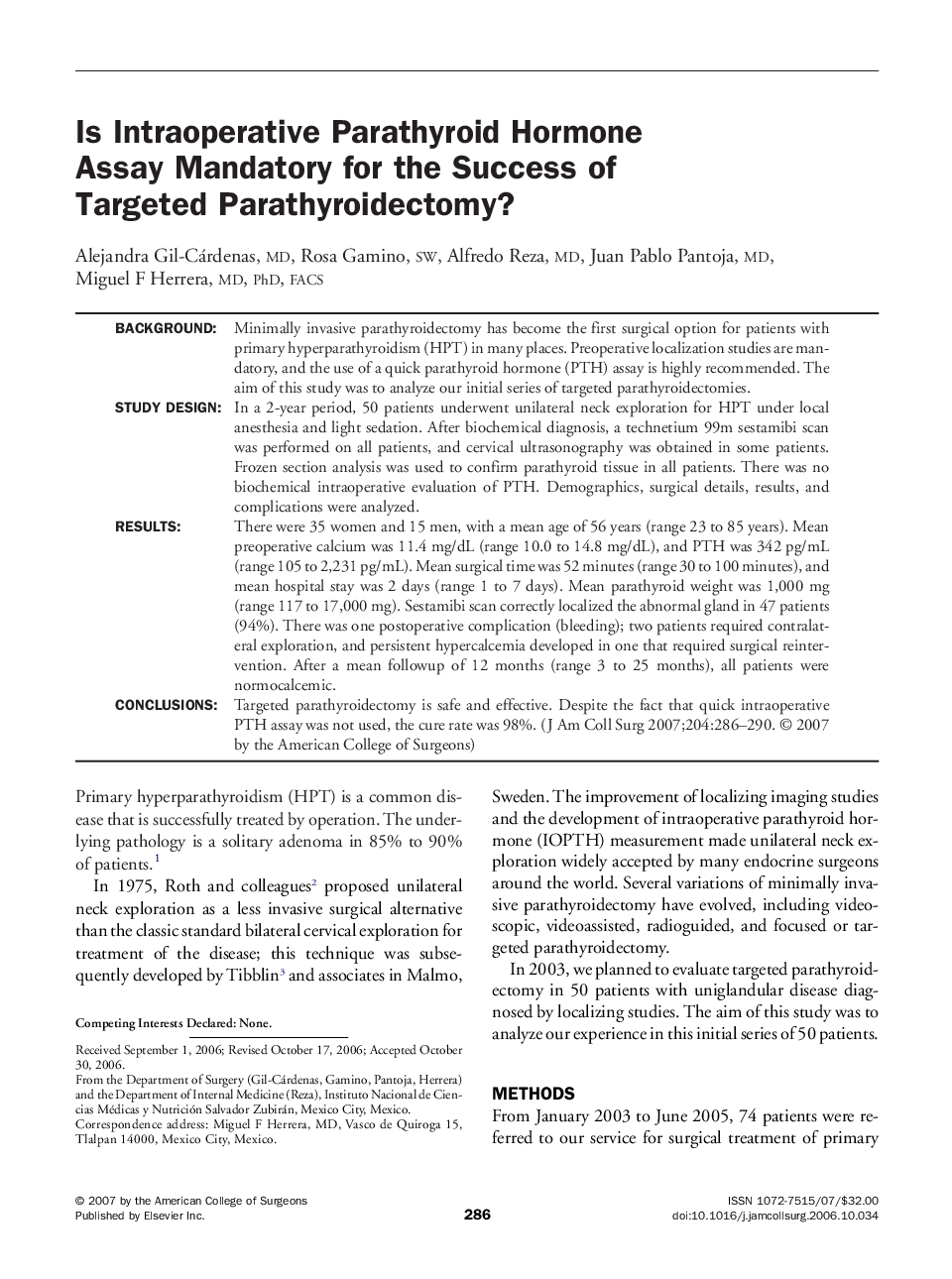| Article ID | Journal | Published Year | Pages | File Type |
|---|---|---|---|---|
| 4295442 | Journal of the American College of Surgeons | 2007 | 5 Pages |
BackgroundMinimally invasive parathyroidectomy has become the first surgical option for patients with primary hyperparathyroidism (HPT) in many places. Preoperative localization studies are mandatory, and the use of a quick parathyroid hormone (PTH) assay is highly recommended. The aim of this study was to analyze our initial series of targeted parathyroidectomies.Study designIn a 2-year period, 50 patients underwent unilateral neck exploration for HPT under local anesthesia and light sedation. After biochemical diagnosis, a technetium 99m sestamibi scan was performed on all patients, and cervical ultrasonography was obtained in some patients. Frozen section analysis was used to confirm parathyroid tissue in all patients. There was no biochemical intraoperative evaluation of PTH. Demographics, surgical details, results, and complications were analyzed.ResultsThere were 35 women and 15 men, with a mean age of 56 years (range 23 to 85 years). Mean preoperative calcium was 11.4 mg/dL (range 10.0 to 14.8 mg/dL), and PTH was 342 pg/mL (range 105 to 2,231 pg/mL). Mean surgical time was 52 minutes (range 30 to 100 minutes), and mean hospital stay was 2 days (range 1 to 7 days). Mean parathyroid weight was 1,000 mg (range 117 to 17,000 mg). Sestamibi scan correctly localized the abnormal gland in 47 patients (94%). There was one postoperative complication (bleeding); two patients required contralateral exploration, and persistent hypercalcemia developed in one that required surgical reintervention. After a mean followup of 12 months (range 3 to 25 months), all patients were normocalcemic.ConclusionsTargeted parathyroidectomy is safe and effective. Despite the fact that quick intraoperative PTH assay was not used, the cure rate was 98%.
